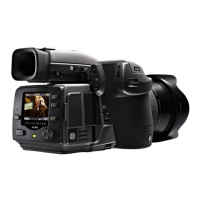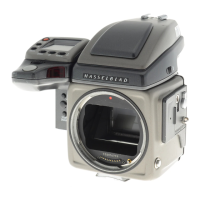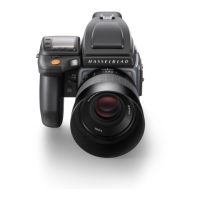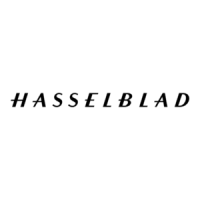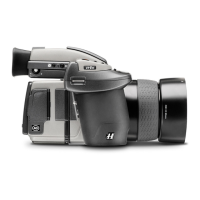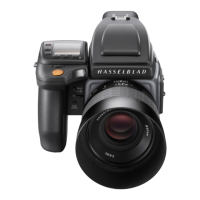119
OTF
O e Film - the original literal description of the light measure-
ment mechanics regarding ash exposure measurement that now
applies to digital sensors too.
Prole
You can allow the H3D II to be set according to ‘proles’. ese
proles are combinations of modes, methods and settings (custom
or default) that suit specic photographic situations. By using
a personal prole - which you can create, name and save - the
camera is immediately congured for a specic purpose without
any need to check through the menus. is is a very rapid and
secure way of working when repeatedly confronted with similar
photographic situations.
As an example you might regularly take outdoor portraits of
wedding couples with a long lens. You want a specic aperture to
restrict depth-of-eld and a fairly fast shutter speed to freeze any
movement. You are concerned about the couple blinking during the
exposure and so want to take several shots in succession, possibly
with slight variations in exposure settings for safety’s sake so you
might choose the bracketing option too. All these parameters can
be preset and stored as a prole that is rapidly accessible.
Quick save
When altering settings, a half-press of the shutter release button
will cause a return to the main screen and save the new setting at
the same time.
Standard exposure
A ‘standard exposure’ in the manual refers to the concept of
technically correct in accordance with internationally accepted
photographic measurement standards (see section on Mid-grey /
18% grey). is does not imply, however, that it would automati-
cally be the preferred choice or be ‘correct’ according to the desired
result. See section on Bracketing.
Main screen
To simplify the descriptions, reference is oen made to a ‘main’
screen regarding the menu. Apart from default settings, there is no
standard setting in the normal sense and therefore you create your
own ‘standard’, which of course can be changed at any time.
e ‘main’ screen is therefore the one you have currently created
and is the one visible on the display when photographing (except
where a particular mode is in actual operation, such as self-timer,
for example).
TTL
rough e Lens - a literal description of the light measurement
mechanics. e advantage is that only the essential parts of the
subject in front of the camera are included. Accessories such as
lters, bellows, close-up rings, converters, etc that could aect
exposure are also taken into account automatically with exposure
evaluation (for general purposes).
Tethered / Untethered
When the H3D II saves digital les directly to a computer - it is
described as tethered..
When les are saved to an internal CF card or an ImageBank II,
it is described as untethered.
Time out
is is the time interval that a temporary setting is maintained
for before it automatically returns to the original setting (default
or custom).
Zone (system)
e Zone System is a method of combined exposure calculation/
lm development providing a great deal of tonal control. It was
originally devised by Ansel Adams - the classic landscape pho-
tographer and Hasselblad user - and now exists in various forms
for both black & white and colour photography.
Naturally in the case of the H3D II or any other digital camera,
the lm development part of the method can not apply. However,
some photographers are used to its philosophy and are familiar
with its terminology and might like to still refer to it.
An integral part of the method includes the classication and
grouping of any given scene into a range of nine (or ten) so-called
zones, hence the name. Concerning the H3D II, the word zone
refers to the grouping and classication of various tones, where
Zone V is the equivalent (whether in black & white or colour) to
18% mid-grey on a scale of Zone I (black) through Zone IX (white).
See specic literature for a complete description of this method.
3F / 3FR
e H3D II produces Hasselblad 3FR les aer capture. ese
RAW format les are automatically converted into 3F les when
imported to a computer using Phocus or FlexColor.
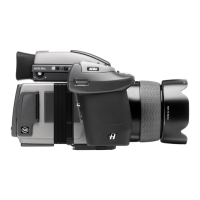
